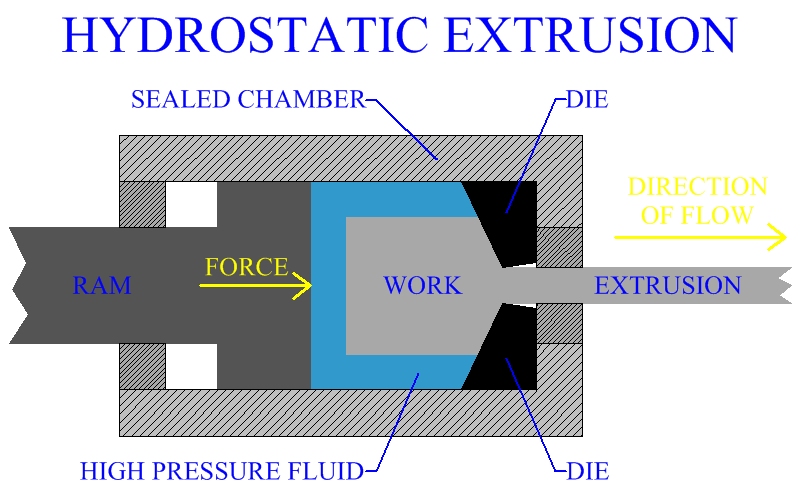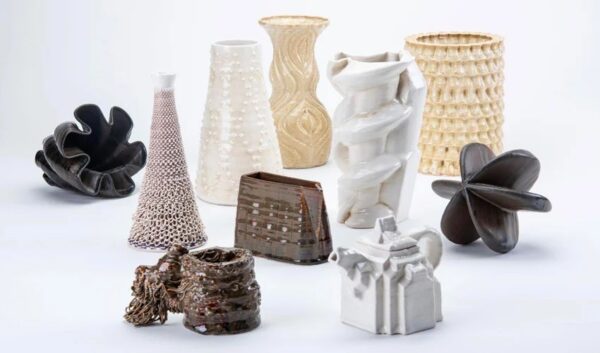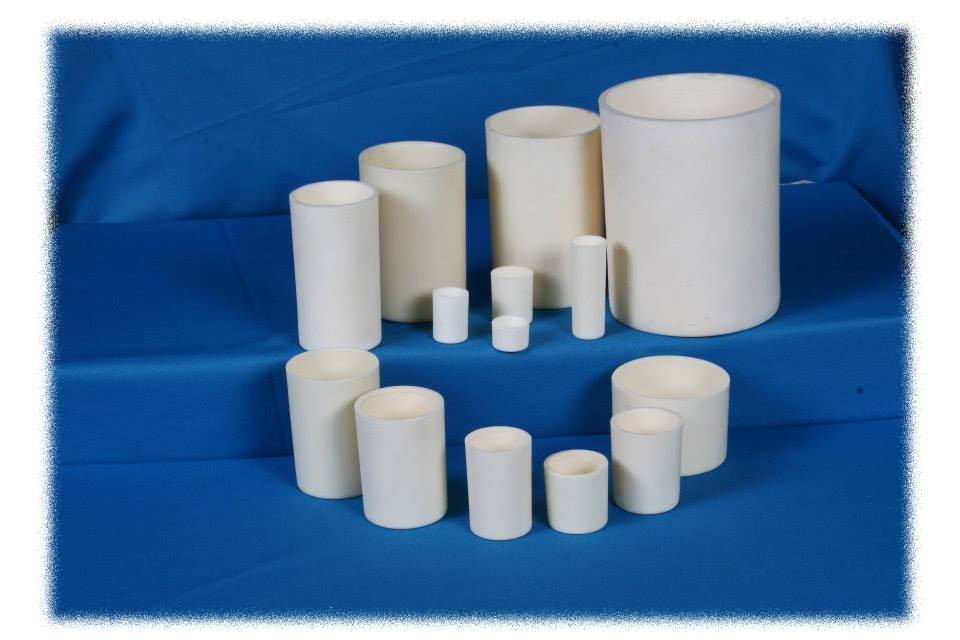The extrusion process in ceramics involves pushing malleable ceramic material through a shaped die to produce elongated objects with a uniform cross-sectional profile.

Basic Principles of Ceramic Extrusion
Ceramic extrusion is an indispensable technique in producing various ceramic structures and shapes. By understanding its basic principles, one can appreciate its versatility and widespread use in the ceramics industry. This method relies on the plasticity of ceramic materials, which makes it possible to shape them into intricate profiles using extrusion equipment.
Components of an Extruder
- Barrel: Houses the main working parts of the extruder, typically kept at specific temperatures to aid in the extrusion process.
- Screw: Rotates within the barrel, pushing the ceramic material forward and generating heat through friction.
- Die: Positioned at the end of the barrel, this component gives the ceramic material its shape as it exits the extruder. Dies can be custom-made to produce a variety of shapes.
- Drive Motor: Powers the rotation of the screw, providing the necessary force for extrusion.
Here’s a detailed look at extruder components on Wikipedia.
The Role of Plasticity in Ceramic Extrusion
Plasticity refers to the ability of a material to undergo deformation without breaking. For ceramics, plasticity is essential for the extrusion process:
- Nature of Plasticity: In ceramics, plasticity is achieved by incorporating certain additives, often referred to as plasticizers.
- Importance in Extrusion: A good level of plasticity ensures smooth flow of the ceramic material through the extruder and die, producing consistent and defect-free products.
- Influencing Factors: Factors such as particle size, moisture content, and the type of plasticizer used can affect the plasticity of ceramics. Adjusting these factors can help in achieving the desired extrusion characteristics.
Types of Ceramic Extrusion
Over the years, innovators have developed different types of extrusion methods, each with its own advantages and distinct operational principles. Here’s an overview of the primary types of ceramic extrusion techniques.
Direct Extrusion (Forward Extrusion)
Here’s what makes it unique:
- Advantages: It often results in a smoother product finish, has a simpler setup, and generally requires less maintenance.
- Applications: Widely used for producing ceramic pipes, tiles, and rods.
Indirect Extrusion (Reverse Extrusion)
Indirect extrusion, or reverse extrusion, offers an alternative approach:
- Process Dynamics: Unlike direct extrusion, the die moves towards the material in indirect extrusion. The ceramic material remains stationary, and the die does the movement.
- Advantages: This method minimizes friction between the ceramic material and the walls of the container, leading to less wear on the equipment.
Hydrostatic Extrusion
Hydrostatic extrusion presents a distinct method that stands out from the rest:
- Advantages: It allows for the extrusion of more brittle ceramic materials without the risk of cracking or breaking. This method can also achieve higher speeds and better surface finishes.
- Applications: Ideal for advanced ceramic products that demand a higher degree of precision and finish.

Materials Used in Ceramic Extrusion
The process of ceramic extrusion heavily relies on the materials employed. These materials define not only the properties of the end product but also the intricacies of the extrusion process itself. By understanding the commonly used ceramic materials and the advantages they offer, one can make informed decisions in ceramic product development.
Common Ceramic Materials
- Alumina (Al2O3): Known for its excellent thermal and electrical insulation properties. Frequently used in electrical insulators and wear-resistant parts.
- Zirconia (ZrO2): Boasts high strength and toughness. Often found in applications like cutting tools and grinding media.
- Silicon Carbide (SiC): Renowned for its hardness and resistance to high temperatures, making it ideal for furnace components and wear parts.
- Clay: A staple in traditional ceramics. Utilized for bricks, tiles, and pottery products.
Benefits of Extruded Ceramic Products
Extruding ceramics offers several advantages, leading to its widespread adoption in the industry:
- Versatility: Extrusion can produce a wide range of shapes and sizes, from simple tubes to intricate profiles.
- Efficiency: High-volume production becomes feasible, resulting in cost savings.
- Enhanced Properties: The extrusion process can enhance certain mechanical properties, like tensile strength, of the ceramic product.

Processing Steps in Ceramic Extrusion
The process of ceramic extrusion involves a series of well-defined steps to ensure the production of high-quality products. Each step is vital and requires meticulous attention to detail. From preparing the ceramic paste to the final sintering, the process requires both art and science.
Preparing the Ceramic Paste
Crafting the perfect ceramic product begins with preparing the right ceramic paste:
- Material Selection: Depending on the desired product, specific ceramic materials like alumina, zirconia, or clay are chosen.
- Blending: Ceramic powders are thoroughly mixed with water, plasticizers, and other additives to achieve the desired consistency.
- Milling: The mixture undergoes milling to reduce particle size and improve homogeneity, ensuring smooth extrusion later on.
- De-airing: Air bubbles trapped within the paste can cause defects.
Extrusion and Shaping
This is where the actual shaping happens:
- Feeding the Extruder: The prepared ceramic paste is fed into the extruder’s hopper.
- Passing Through the Die: As the screw of the extruder rotates, the ceramic material is forced through the shaping die.
- Cutting and Detailing: As the extruded material emerges, it’s cut into desired lengths, and any additional detailing is done immediately while the material is still pliable.
Drying and Sintering
Post-extrusion steps are crucial to ensure the structural integrity of the ceramic product:
- Drying: The extruded product is allowed to dry slowly, ensuring that all the moisture evaporates without causing cracks.
- Sintering: This step fuses the ceramic particles together, imparting strength and rigidity.
- Cooling: After sintering, the product is allowed to cool slowly to room temperature to prevent thermal shock.

Applications of Extruded Ceramics
Extruded ceramics, thanks to their versatility and the range of properties they offer, find applications in an array of industries. From traditional usage in construction to advanced components in modern tech, the applications of extruded ceramics are vast and varied.
Building Materials
Ceramics have been a cornerstone in the construction industry for centuries:
- Pipes and Drainage Systems: Extruded ceramic pipes offer resistance to corrosion, ensuring longevity in sewer systems and industrial waste channels.
- Decorative Elements: Unique extruded ceramic shapes find their place in decorative elements, enhancing the visual appeal of architectural designs.
Industrial Components
Industries are leaning on ceramics for their resilience and performance attributes:
- Wear-resistant Parts: In industries where equipment faces abrasion, extruded ceramic components offer superior wear resistance.
- Heat Shields and Reflectors: Ceramics can handle high temperatures, making them perfect for components that need to deflect or withstand intense heat.
Innovative Products in Modern Applications
The modern world, with its technological advancements, has found innovative uses for extruded ceramics:
- Sensors: Miniaturized ceramic components are used in sensors, providing accurate readings in various environments.
- Medical Implants: Biocompatible ceramic materials are being explored for implants, offering a promising alternative to traditional materials.
- Electronic Devices: Ceramics play a crucial role in the miniaturization of electronic components, thanks to their electrical and thermal properties.




